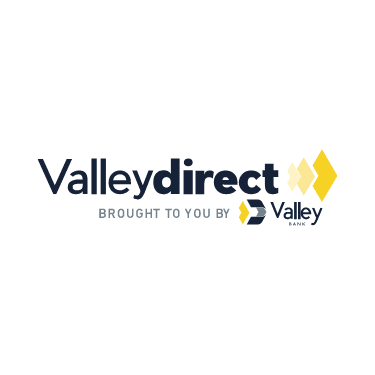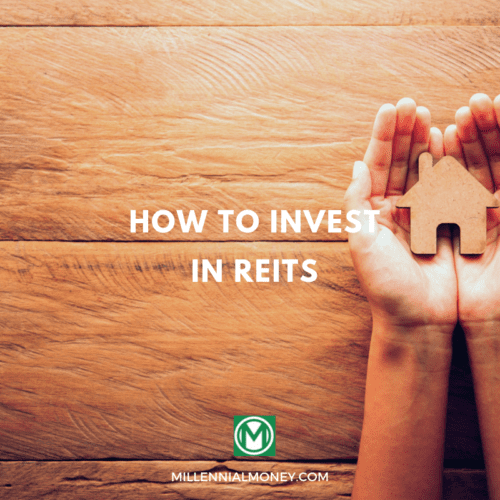Most investors want high-yield investments for the best returns. But how do you know which investments pay the most?
Unfortunately, I don’t have a crystal ball to tell you which investments will pay you the highest yields. However, I can review the investments with the most stable history and encourage you to diversify your funds across many investment opportunities to ensure you reach your financial goals.
What Are High-Yield Investments?
High-yield investments provide a greater return on your investment. While there’s never a guarantee an investment will perform well, when you take your chances with higher-yield investments, you increase your chances of a larger return.
It’s not a good idea to invest everything in high-yield investments, throwing caution to the wind, but diversifying your funds can get you closer to the yield you desire.
The best portfolio includes a decent variety of high and low-yield investments. Low-yield investments can offset the risk of high-yield investments, but when the riskier investments perform well, you’ll have even greater returns.
High-Yield vs. Low-Yield Investments
So what’s the difference between high and low-yield investments?
High-yield investments are ‘riskier’ investments, such as stocks, real estate, or alternative assets like commodities or options.
Low-yield investments are more conservative. There’s still a risk of loss, but it’s much lower. Common low-yield investments include bonds, savings, and money market accounts.
How Risky Are High-Yield Investments?
Some high-yield investments aren’t as risky as they sound, and some are virtually risk-free, especially through an FDIC-insured account.
On the flip side, though, other high-yield investments are incredibly risky and could cause you to lose everything if you aren’t careful.
11 Best High-Yield Investments for 2025
Here are the best high-yield investments for 2025 in order of risk, lowest to highest. Of course, the higher you climb the ladder, the more you can make, but you also risk much more.
- High-Yield Savings Accounts
- CDs
- Money Market Accounts
- High-Yield Bonds
- Treasury Inflation-Protected Securities
- Peer to Peer Lending
- ETFs
- High-Dividend Stocks
- Real Estate
- Cryptocurrency
- Alternative Assets
1. High Yield Savings Account (HYSA)
High-yield savings accounts are the safest place to put your money, and they can offer a significant reward.
HYSAs are like traditional savings accounts but often have higher deposit requirements and pay much higher APYs.
Before opening an HYSA, ensure it’s FDIC insured and read the bank’s rules on withdrawing funds. Most allow you to make up to six withdrawals per cycle, but if they have tiered interest rates, you could earn a lower rate if your balance falls below the threshold.
As with any interest rates, high-yield savings account rates fluctuate with the economy. With inflation at high rates, you might find HYSA rates between 3% to 4%, much higher than a traditional savings account rate.
HYSAs are great for short-term goals or emergency funds because they are liquid and safe. In addition, you don’t have to worry about them losing value; depending on inflation rates, you may keep pace with inflation.
2. CDs (Certificates of Deposit)
CDs are time deposits that pay higher interest rates than savings accounts if you keep your money in the CD for the entire term.
You choose the length of the CD, usually three months to five years, and the longer the term, the more interest you’ll earn. If you withdraw funds before the term ends, you’ll pay a penalty, but you’ll earn the full amount if you leave the funds.
If you’re worried about not having access to your funds, consider a CD ladder. With this option, you invest the same amount of money in several CDs with different maturity dates ranging from 6 months to 5 years. For example, you might have CDs maturing every six months, so you can access the funds without paying the penalty.
Like HYSAs, CDs are FDIC-insured. However, one risk with CDs, especially long-term CDs, is you miss out on higher interest rates if they rise while your money is locked up in a longer-term CD.
3. Money Market Accounts (MMAs)
Money market accounts are like savings and checking accounts combined. You get the benefits of an HYSA with higher APYs, but have check writing privileges to a point. Like an HYSA, you can only make up to six monthly withdrawals without paying a penalty, including writing checks.
MMAs are a good alternative for investors who don’t want to tie their funds in a CD but want higher interest rates. MMAs offer liquidity while still paying competitive rates.
MMAs are great for short-term use, such as funds you saved for a down payment on a house or an emergency fund. Rather than letting the cash sit idle and not earning interest, deposit it in an MMA that pays a competitive rate for the amount you can deposit.
MMAs are also FDIC-insured, but it’s best to diversify your cash investments at different banks because each bank can only insure a customer up to $250,000 in combined accounts.
4. High-Yield Bonds
Bonds are another conservative yet high-yield investment to consider adding to your portfolio. Again, there are a few options to consider.
Series I Bonds
The U.S. Treasury issues series I bonds, making them a conservative investment. They have a guaranteed payout and can earn interest for up to 30 years. They pay a fixed interest rate, but the U.S. Treasury adjusts it twice a year to account for inflation.
Anyone can invest up to $10,000 in Series I bonds each year, and if you keep them for at least five years, you won’t pay a penalty for cashing them in. Investors can hold onto the bonds for up to 30 years, but if you cash in between years one through five, you’ll pay a penalty equal to three months’ interest.
Municipal Bonds
Government agencies issue municipal bonds at the state and local levels. Government agencies issue them to finance projects like building roads or renovating schools. Within municipal bonds are two options:
- GO bonds – General obligation bonds aren’t tied to a specific project, but the government guarantees repayment.
- Revenue bonds – These bonds relate to a specific project, such as building a road, and repayment depends on the revenue from the project.
Municipal bonds overall are low risk, but revenue bonds have an elevated risk because repayment depends on the project’s revenue. In addition, the value of municipal bonds fluctuates with interest rates, which means you might lose money when rates increase, but there’s a low risk of default.
Corporate Bonds
Companies issue corporate bonds to fund projects, but unlike government bonds, they aren’t guaranteed, so they are somewhat riskier. You can invest in two types of corporate bonds:
- Investment grade bonds – Large companies with a strong financial background issue investment grade bonds. They’re risky because it’s a loan, but most investment-grade bonds don’t default.
- Junk bonds – Smaller or less dependable companies issue junk bonds. However, these companies may not have a good track record or history, which puts repayment up in the air.
Corporate bonds offer higher returns than government bonds but more risk. If they default, there’s no insurance to fall back on, so don’t put all your money in corporate bonds; be sure to diversify.
5. Treasuries and Treasury Inflation Protected Securities (TIPs)
TIPs are another government-issued security with a low risk of default. The inflation protection component is the difference between Treasury Inflation-Protected Securities and other government debt securities.
TIPs pay lower interest rates than normal Treasury debts, but they’ll match inflation increases and decreases. So, for example, if inflation increases by 2%, your TIPs principal balance will increase too, so you keep pace with inflation.
If you hold onto the security until maturity, you’ll receive the full face value adjusted for inflation.
6. Peer-To-Peer (P2P) Lending
Peer-to-peer lending allows investors to operate as banks. However, they come to peer-to-peer platforms instead of a borrower going to the bank to get a loan. These platforms act as the middleman between investors (you) and borrowers (who need the money).
Most P2P loans are unsecured personal loans, but some are secured by businesses or real estate.
P2P investors can diversify their funds across several loans or put them into one loan. The P2P platform will provide information about the loan’s risk to help you determine how much risk you’re prepared to take on.
First, they evaluate information similar to a bank, looking at a borrower’s credit score, income, debts, and assets. Then, they’ll grade each borrower according to their rating scale and let investors decide which loans they want to invest in.
Investors can typically invest as little as $25 or as much as they want in a loan, but diversifying your risk is always best.
7. ETFs (Exchange Traded Funds)
ETFs are many stocks in one fund, funded by multiple investors. The fund manager uses the funds collected to invest in stocks from many companies, providing a diversified investment.
ETFs track a specific index, such as the S&P 500 or Nasdaq 100. With all companies in the index in the fund, there’s automatic diversification, making it a low-risk investment for most investors.
The nice thing about ETFs is you don’t have to worry when one company’s stock plummets, as hundreds of others in the fund usually offset the loss.
Most ETFs are passively managed, so the fees are low because fund managers aren’t buying and selling stocks frequently. This makes it a good investment for long-term investors.
8. High-Dividend Stocks and Preferred Stocks
Stocks are high-risk but can be one of the best high-yield investments if you have the risk tolerance. The two best types of stocks for high yields are high-dividend and preferred stocks.
High-Dividend Stocks
Large companies with a solid background issue dividend stocks or stocks that pay their investors dividends monthly, quarterly, or annually.
Investors can withdraw the dividends or reinvest them to increase their portfolio. Of course, there’s never a guarantee that companies will pay dividends, but if history shows that they pay them, most companies continue.
Some companies also increase the dividends they pay yearly, depending on performance.
Preferred Stocks
Preferred stocks are a type of dividend stock. While you can invest in a common dividend-paying stock, preferred stockholders receive dividends first. Another difference is that preferred stocks always pay dividends; it’s not a question of whether they will pay them.
If a company has performance issues, common stockholders might not receive payment, but preferred stockholders will or will at least receive payment first.
9. Real Estate
Real estate is a great high-yield investment; you don’t have to own physical real estate to take advantage of it. While it’s the most common way and can yield great returns, there are other options too.
Real estate investments often have tax benefits, and investors can leverage their investments with loans. For example, if you have $50,000 to invest but qualify for financing, you might be able to buy a $200,000 home, investing only $50,000 upfront.
Physical Real Estate
You can invest in physical real estate, buying properties and renting them to tenants. You earn monthly income from the rent and capital gains when you sell the property if you sell for a profit. Some investors tap into a property’s equity and use the funds to buy another property to increase their real estate portfolio.
Keep in mind, though, physical real estate isn’t liquid. So if you’re in a bind and need your funds, you can’t sell it overnight and get your money back. It could take months to sell the property and get your money, and you’ll pay fees to settle the transaction.
If you operate as a landlord, you’re on call 24/7 and responsible for all maintenance, repairs, and issues the home experiences. Of course, you’ll also deal with tenants and their issues, so it’s a big job, but one that can pay well if all goes right.
Real Estate Crowdfunding
Real estate crowdfunding apps make anyone a real estate investor. With crowdfunding, you can invest as little as $100 and call yourself a real estate investor. Typically, you’ll invest in commercial properties that produce income. In addition, you may receive monthly rent based on your investment and a portion of the profits when they sell the property.
Like peer-to-peer lending, evaluate the opportunities, looking closely at the risk. Crowdfunding apps rate investments based on the risk of default, allowing investors to diversify their risk.
With real estate crowdfunding, you don’t have to own, manage, or deal with real estate. Your only job is to choose the investment that matches your risk tolerance and the amount you can invest. Then you sit back and enjoy your returns.
The nice thing about real estate crowdfunding is you aren’t responsible for the property maintenance, repairs, or handling tenants. All you have to do is invest your money, and the real estate investor you funded handles the property management.
I’ve been investing with Fundrise since 2017. Disclosure: when you sign up with my link, I earn a commission. All opinions are my own.
Real Estate Investment Trusts
REITs are investments in real estate companies that buy, manage, and sell commercial real estate properties. REITs must pay back at least 90% of their profits to shareholders, allowing more investors to take advantage of real estate investments.
You might invest in shopping malls, hospitals, hotels, or apartment buildings. Some platforms allow investments of as little as $10 in REITs, making it possible for anyone to invest in real estate.
10. Cryptocurrency
Cryptocurrency is virtual currency investors can buy, hold and trade. It’s a risky investment but became a $2 trillion market in 10 years.
The crypto market is volatile, but many investors adopt the HODL (hold on for dear life) investment method, which means they hold onto their crypto no matter what happens to the market.
Because virtual currency continues to grow, investors have an opportunity, but you should only invest what you can risk in crypto. Whether you trade Bitcoin, Etherium, or XRP, you’ll need an app such as eToro to facilitate the trades.
11. Alternative Investments
Alternative investments, like cryptocurrency, are quickly increasing in popularity thanks to fintech apps. While alternative investments used to mean investing in certain commodities, today, you can invest in things like art, legal finance, and some real estate investments.
Alternative investments often have a yield of 7% to 15% and pay on specific schedules. However, they are often long-term investments, so keep the timeline in mind before investing your funds.
High Yield Investment Scams
Do your due diligence before investing in high-yield investments because scammers prey on investors looking for big returns.
They create flashy websites that promise incredible returns and reel people in, hoping to get their money only for investors to find out it was a scam and to be out of the funds they invested.
To avoid high-yield investment scams, watch for the following:
- Promising unrealistic returns
- Promising little to no risk
- The ad or opportunity comes to you without you requesting information
If you can’t find information on the investment, consider it a scam. Only work with companies and apps listed on the Better Business Bureau with a solid history of legitimate investments.
An investment that loses money isn’t a scam, but one that was never an investment in the first place but took your money is a scam.
Pros and Cons
Like any investment, high-yield investments have advantages and disadvantages that you should know.
Pros:
- Higher returns – High-yield investments have a greater chance of higher returns. Yes, there is a higher risk, but you’ll earn more when the investments perform well. Evaluating the risk versus the reward is important to determine if it’s something you can handle.
- Diversifying your portfolio – High-yield investments help you diversify your portfolio. Most investors offset high-risk investments with lower-risk investments, allowing you to earn income in several ways.
- Safer options – Not all high-yield investments are ‘high-risk.’ High-yield savings accounts, for example, are safe if you use an FDIC-insured bank.
Cons:
- High risk of loss – Certain high-yield investments, such as junk bonds or risky stocks, have a high risk of loss. While the reward is great when these assets outperform what’s expected, there is a much higher risk of loss.
- Requires a lot of research – Some high-yield investments require a lot of research to ensure they are a good option. For example, peer-to-peer lending can be a great investment, but if you invest all your money in one high-risk borrower and they default, you could lose everything.
- Diversification is a must – If you put all your eggs in one basket, you could lose everything. So if you invest in high-yield investments, you must offset it with less risky investments to ensure you don’t lose everything.
Frequently Asked Questions
What Are the Safest High-Yield Investments?
The safest high-yield investments are Treasury bonds and Series I bonds for two reasons. First, they have a government guarantee, and second, they are adjusted for inflation. This means you won’t lose your money, and your returns will be adjusted according to inflation rates.
Which Investment Gives the Highest Return in the Short Term?
If you want high-yield returns fast, consider dividend stocks. They pay dividends to their stockholders either monthly or quarterly. You can use the dividends however you wish, but the best use is to reinvest them and grow your portfolio further.
What Is a Good Yield Percentage?
Every investor has a different definition of a good yield percentage. A yield of 2% to 6% is good for most investors. However, to determine which return is good for you, determine your risk tolerance and the risk you must take to get the desired return.
Is a Higher Yield Better?
A higher yield can be better in some instances, but it’s also riskier. If you don’t have a high-risk tolerance, investing in a higher-yield investment might not be beneficial.
Instead, only invest in what you can afford to lose or the investment with a timeline that will help you reach your financial goals.
What Is the Best High Yield Investment?
The best high-yield investment is preferred stock. You are guaranteed dividends (first if they have trouble) and invest in companies with a solid history. If you can’t withstand the risk stocks carry, you should stick to more conservative investments, such as Series I bonds or Treasury securities.
What Are the Tax Implications on High Yield Investments?
How long you have the investment determines the tax implications if there are capital gains. On the other hand, if you lose money, you won’t pay taxes, which might lower your tax liabilities.
You’ll pay either short-term or long-term capital gains taxes if you have a profit:
Short-term capital gains are profits on investments you have for one year or less. You’ll pay your ordinary income tax rates on these gains.
Long-term capital gains are profits on investments you have held for over one year. Long-term capital gains taxes are lower than ordinary income tax rates and range from 0% to 20%.
Are High-Yield Investments Worth It?
High-yield investments certainly have risks, but the reward can be great!
Diversify your capital across as many investments as possible, keeping some funds safe in an HYSA or CD. This method ensures you have money to fall back on should you need it, but it gives your funds a chance to grow to help you reach your financial goals.







No comments yet. Add your own